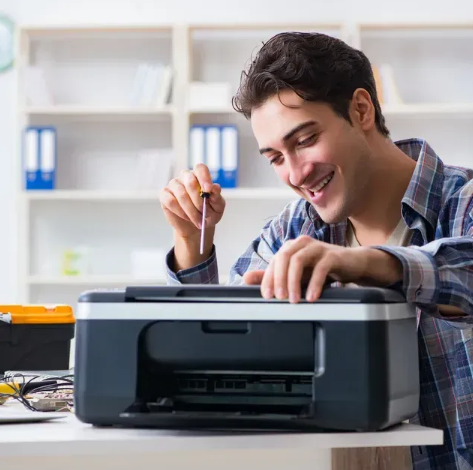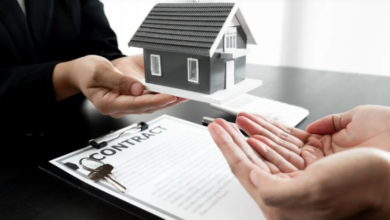Troubleshooting 101: Why Your Brother Printer Won’t Connect to WiFi and How to Fix It

If you’re struggling to get your Brother printer connected to your WiFi, you’re not alone. Many users face similar issues, whether it’s due to network settings, software conflicts, or hardware problems. This guide will walk you through simple troubleshooting steps to help you identify and fix the connection issues, so you can get back to printing without a hitch.
Key Takeaways
- Check your network connection and ensure your printer is on the same WiFi network.
- Verify that wireless security settings are correctly configured.
- Update or reinstall your printer drivers if you’re experiencing software issues.
- Make sure your router settings allow for printer connections, including DHCP and MAC filtering.
- If problems persist, consider reaching out to printer cartridge suppliers or Brother support for assistance.
Identifying Connection Issues
Before you start tearing your hair out, let’s figure out what’s actually going wrong with your Brother printer’s WiFi connection. It’s like being a detective, but instead of solving a crime, you’re solving a printer problem. And honestly, sometimes it feels just as complicated.
Check Network Connection
First things first: is your printer even seeing your WiFi network? Make sure your printer is within range of your router. Sometimes the simplest solution is the right one. Check other devices to confirm your WiFi is working. If your phone or laptop can’t connect, the problem might be with your internet service provider (ISP) or router, not the printer. Also, make sure the printer is actually turned on. I know it sounds obvious, but you’d be surprised.
Verify Wireless Security Settings
Okay, so your WiFi is working, but is your printer using the right password and security protocol? This is a common gotcha. Most routers use WPA2 or WPA3 these days, but older printers might only support older protocols like WEP, which is less secure and sometimes disabled on modern routers. Double-check your router’s security settings and make sure your printer is configured to use a compatible protocol. You might need to update the printer’s firmware or wireless settings to match your router.
Print WLAN Report
This is where things get a little more technical, but don’t worry, it’s not rocket science. Most Brother printers have a built-in function to print a Wireless LAN (WLAN) report. This report contains a wealth of information about your printer’s network connection, including:
- SSID (the name of your WiFi network)
- IP address
- Signal strength
- Security settings
This report can give you clues about why your printer isn’t connecting. For example, if the SSID is wrong, you know you’re trying to connect to the wrong network. If the IP address is 0.0.0.0 or 169.254.x.x, it means the printer isn’t getting an IP address from your router. The signal strength can tell you if the printer is too far from the router. Here’s a quick guide to interpreting signal strength:
| Signal Strength | Meaning |
| Excellent | Printer is very close to the router. |
| Good | Connection should be stable. |
| Fair | Connection might be intermittent. |
| Weak | Printer is too far from the router. |
If the WLAN report indicates a problem, don’t panic. It’s just a starting point for troubleshooting. The next steps will involve configuring your printer’s wireless settings and making sure your router is set up correctly.
Configuring Wireless Settings
Okay, so you’re having trouble getting your Brother printer on WiFi? Let’s get into the nitty-gritty of setting up the wireless connection. Sometimes, the initial setup doesn’t go as planned, and you need to manually tweak things. Don’t worry; it’s usually not too complicated.
Using the Control Panel
Many Brother printers have a control panel that lets you directly configure the wireless settings. This is often the easiest way to get your printer connected.
Here’s a general idea of what you might need to do:
- Go to the printer’s menu.
- Find the “Network” or “Wireless” settings.
- Select your network from the list of available networks.
- Enter your WiFi password (also known as the network key or passphrase).
If your network is hidden, you’ll need to manually enter the SSID (network name). More on that in the next section!
Manually Adding Network Name
Sometimes, your WiFi network might be hidden. This means it won’t show up in the list of available networks when you’re trying to connect your Brother printer. In this case, you’ll need to manually add the network name (SSID) and security settings.
Here’s what you’ll typically need:
- SSID (Network Name): The exact name of your WiFi network.
- Security Type: Usually WPA2-PSK (AES) is supported.
- Password/Network Key: The password for your WiFi network.
To manually add the network name, you’ll usually go through the printer’s control panel, find the wireless settings, and look for an option like “Manual Setup” or “Add Network.” Enter the SSID, select the security type, and enter the password. Double-check that you’ve entered everything correctly, because typos are a common issue!
Resetting Network Card
If you’ve previously connected your Brother printer to a wireless network, but it’s no longer working, resetting the network card can often resolve the issue. This essentially clears out any old network settings and allows you to start fresh.
How to reset the network card varies depending on your specific Brother printer model. However, here’s a general approach:
- Look for a “Network Reset” or “Restore Network Settings” option in the printer’s menu.
- You might need to confirm the reset. Be careful, as this will erase all your current network settings.
- After the reset, try connecting to your WiFi network again using the control panel or the Brother software on your computer.
Resetting the network card is like giving your printer’s WiFi a clean slate. It can fix a lot of connection problems, especially if you’ve changed your WiFi password or router settings recently.
Troubleshooting IP Address Problems
Sometimes, the reason your Brother printer isn’t connecting to WiFi comes down to a simple IP address issue. It’s like having the wrong street address for a delivery – the data just can’t find its way to your printer. Let’s look at some common IP address problems and how to tackle them.
Check IP Address Validity
The first thing to do is make sure your printer actually has a valid IP address. An invalid IP address is like having a street address that doesn’t exist. Here’s what to look for:
- All zeroes (0.0.0.0) – This usually means the printer couldn’t get an IP address from your router.
- An APIPA address (169.254.x.x) – This indicates the printer is trying to assign itself an address because it couldn’t get one from the router.
- An address outside your network’s range – Your network likely uses a specific range of IP addresses (e.g., 192.168.1.x). If the printer’s address is outside this range, it won’t be able to communicate.
If you find any of these issues, it’s a sign you need to dig deeper.
Obtain IP Address from Network Report
Your Brother printer can print a Network Configuration Report. This report contains all sorts of useful information, including the printer’s IP address, subnet mask, gateway, and other network settings. Here’s how to find that IP address:
- Print the Network Configuration Report (refer to your printer’s manual for instructions).
- Locate the “IP Address” field on the report.
- Note the IP address for comparison with your computer’s IP address.
If the IP address is missing or invalid, the printer isn’t getting an address from your router. This could be due to DHCP issues or other network problems. Time for some printer repair!
Set Static IP Address
If your printer consistently has trouble obtaining an IP address automatically, you might want to assign it a static IP address. This means you’re manually configuring the printer with a specific IP address that doesn’t change. Here’s how to do it:
- Access your printer’s control panel (usually through the LCD screen).
- Navigate to the network settings.
- Find the option to configure IP settings (it might be under “TCP/IP” or similar).
- Select “Manual” or “Static” IP configuration.
- Enter the following information:
- IP Address: Choose an IP address within your network’s range that isn’t already in use. A good practice is to pick an address at the high end of the range (e.g., 192.168.1.200 if your range is 192.168.1.1 to 192.168.1.254).
- Subnet Mask: This is usually 255.255.255.0 for most home networks.
- Gateway: This is usually your router’s IP address.
- DNS Server: You can use your router’s IP address or a public DNS server like Google’s (8.8.8.8 and 8.8.4.4).
- Save the settings and restart your printer.
By setting a static IP address, you ensure that your printer always has the same address on your network, which can prevent connection problems.
Driver and Software Considerations
It’s easy to overlook the software side of things when your Brother printer refuses to play nice with your WiFi. But outdated or corrupted drivers and software can definitely be the culprits. Let’s get into how to sort this out.
Update Printer Drivers
Outdated printer drivers are a very common cause of connection problems. Think of drivers as the translator between your computer and your printer; if the translator is speaking an old language, things get lost in translation.
Here’s how to update them:
- Go to Brother’s support website. Find the “Downloads” section.
- Enter your printer model.
- Download the latest drivers for your operating system.
- Install them. It’s usually a pretty straightforward process.
Sometimes, even if you think you have the latest drivers, it’s worth reinstalling them. Corrupted files happen.
Reinstall Brother Software
Sometimes the issue isn’t just the driver, but the whole software package. The Brother iPrint&Scan app, for example, can sometimes get buggy. Reinstalling the software can fix a multitude of sins.
- Uninstall the current software through your computer’s control panel or settings menu.
- Download the latest version from the Brother support website.
- Install it, making sure to follow all the prompts.
Reinstalling the software is like giving your printer a fresh start. It wipes out any corrupted files or settings that might be causing the connection issues.
Check for Compatibility Issues
Is your printer software compatible with your operating system? This is a big one, especially if you’ve recently upgraded your computer. Older software might not work well with newer operating systems, and vice versa.
- Check the Brother support website for compatibility information.
- Look for any known issues or workarounds.
- Consider using compatibility mode if you’re running an older operating system.
If all else fails, consider reaching out to Brother support or visiting local printer cartridge suppliers; they might have some insights or solutions specific to your setup.
Router and Network Configuration
Let’s talk about your router. It’s easy to forget about it, but it’s the heart of your network. If your Brother printer is acting up, the problem might be hiding in your router’s settings. I know, digging into router settings sounds intimidating, but trust me, it’s often simpler than you think.
Verify Router Settings
First things first, make sure your router is actually broadcasting a WiFi signal. Sounds obvious, right? But sometimes the simplest things are the culprit. Check that the WiFi is enabled and that the SSID (network name) is visible. Also, confirm that your printer is within range of the router. Walls and other obstructions can weaken the signal. You might want to try moving the printer closer to the router temporarily to see if that helps.
Check DHCP Configuration
DHCP (Dynamic Host Configuration Protocol) is what automatically assigns IP addresses to devices on your network. If it’s not working right, your printer might not be getting an address, which means it can’t connect.
- Make sure DHCP is enabled in your router’s settings. Most routers have it on by default, but it’s worth checking.
- See if there’s a limit on the number of devices that can get an IP address. If you’ve got a lot of gadgets connected, you might have hit the limit.
- Reboot your router. Seriously, it fixes a surprising number of problems.
Adjust MAC Address Filtering
MAC address filtering is a security feature that lets you specify which devices are allowed to connect to your network based on their MAC address (a unique identifier for each network adapter). If MAC address filtering is enabled, and your printer’s MAC address isn’t on the list of allowed devices, it won’t be able to connect.
To find your printer’s MAC address, print a Network Configuration Report. The report will list all sorts of useful information, including the MAC address. Once you have it, log into your router’s settings and add the MAC address to the list of allowed devices. Be careful when changing these settings, as incorrect configurations can lock all devices out of the network.
It’s a bit of a pain, but it’s a good way to keep your network secure.
Testing and Verifying Connection
Okay, so you’ve gone through all the steps, tweaked settings, and maybe even yelled at your printer a little (we’ve all been there). Now it’s time to see if all that effort actually paid off. Here’s how to test and verify that your Brother printer is finally playing nice with your WiFi.
Print Network Configuration Report
Most Brother printers have a built-in function to print a network configuration report. This report is like a cheat sheet, giving you all the vital stats about your printer’s network connection. It shows the IP address, subnet mask, gateway, and other important details. To print this report, you’ll usually need to navigate through the printer’s control panel. The exact steps vary depending on your model, but look for something like “Network,” “Report,” or “Print Configuration.”
Once you have the report, double-check the following:
- IP Address: Is it valid for your network? Does it look like other devices on your network? (e.g., 192.168.1.X)
- Subnet Mask: Should typically be 255.255.255.0 for most home networks.
- Gateway: This is the IP address of your router. Make sure it matches.
- Connection Status: The report should clearly state whether the printer is connected to the network.
Use Brother iPrint&Scan App
The Brother iPrint&Scan app is a handy tool for testing the connection from your smartphone or tablet. Download it from your app store (iOS or Android) and install it. Make sure your mobile device is connected to the same WiFi network as your printer. Open the app, and it should automatically detect your printer. If it does, great! You’re likely connected. If not, the app might give you some troubleshooting tips or error messages to investigate.
Conduct a Test Print
This is the ultimate test. Try printing something from your computer. It could be a document, a photo, or even just a test page. If it prints without any issues, congratulations! You’ve successfully connected your Brother printer to WiFi. If it still doesn’t print, don’t panic. Go back through the previous steps and double-check everything. Sometimes, it’s just a matter of retracing your steps and spotting a missed setting.
If you’re still having trouble, try pinging the printer’s IP address from your computer. Open the command prompt (Windows) or Terminal (Mac) and type ping [printer’s IP address]. If you get replies, it means your computer can communicate with the printer on the network level. If you don’t get replies, there’s still a network connectivity issue to resolve.
Seeking Professional Help
Sometimes, despite our best efforts, tech problems just won’t go away. If you’ve tried all the troubleshooting steps and your Brother printer still refuses to connect to WiFi, it might be time to call in the experts. Don’t feel bad! Networking can be tricky, and sometimes it requires specialized knowledge or tools.
Contact Brother Support
Brother offers pretty good customer support, and they’re usually equipped to handle a wide range of printer issues. Before you call, make sure you have your printer’s model number and serial number handy. This will help the support team quickly identify your specific device and provide more accurate assistance. You can usually find this information on a sticker on the printer itself, or in the printer’s documentation. Be prepared to describe the troubleshooting steps you’ve already taken, as this will save time and help them pinpoint the problem more efficiently.
Consult with Network Administrator
If the problem seems to be related to your network configuration, rather than the printer itself, it might be worth consulting with a network administrator. This is especially true in larger offices or organizations where the network setup is more complex. A network admin can help you:
- Diagnose network connectivity issues.
- Verify router settings and DHCP configuration.
- Adjust MAC address filtering (if applicable).
- Ensure your printer is properly integrated into the network.
A network administrator can also help identify potential security vulnerabilities that might be preventing your printer from connecting to the WiFi network. They can implement appropriate security measures to protect your network and devices from unauthorized access.
Visit Local Printer Cartridge Suppliers
This might sound a little odd, but hear me out. Many local printer cartridge suppliers also offer basic printer repair and troubleshooting services. They might be able to diagnose the problem and offer a quick fix, or at least point you in the right direction. Plus, they often have a good understanding of common printer issues and can provide valuable insights. It’s worth a shot, especially if you prefer in-person assistance over phone or online support.
Wrapping It Up
So, there you have it! If your Brother printer is giving you a hard time connecting to WiFi, don’t panic. Just follow the steps we talked about. Start with the basics like checking your network settings and ensuring your printer is on the right WiFi. If that doesn’t work, try resetting the printer or reinstalling the drivers. Sometimes, it’s just a little hiccup that can be fixed with a few tweaks. And if all else fails, don’t hesitate to reach out for help. You’re not alone in this—many people face the same issues. Good luck, and happy printing!
Frequently Asked Questions
Why won’t my Brother printer connect to WiFi?
Your Brother printer might not be connected to the wireless network due to incorrect settings or issues with the network itself.
How can I check if my printer is connected to the network?
You can print a WLAN report from your printer to see if it shows an error code or confirms a connection.
What should I do if my printer shows a connection error?
If you see a connection error, double-check your network name and password, and make sure your printer supports your router’s security settings.
How do I reset the network settings on my Brother printer?
You can reset the network settings by accessing the printer’s control panel and selecting the option to reset the network card.
What if my printer’s IP address is invalid?
If the IP address is invalid, you may need to check your router settings or manually set a static IP address for your printer.
When should I contact Brother support?
If you’ve tried all troubleshooting steps and your printer still won’t connect, it’s best to reach out to Brother support for further assistance.





